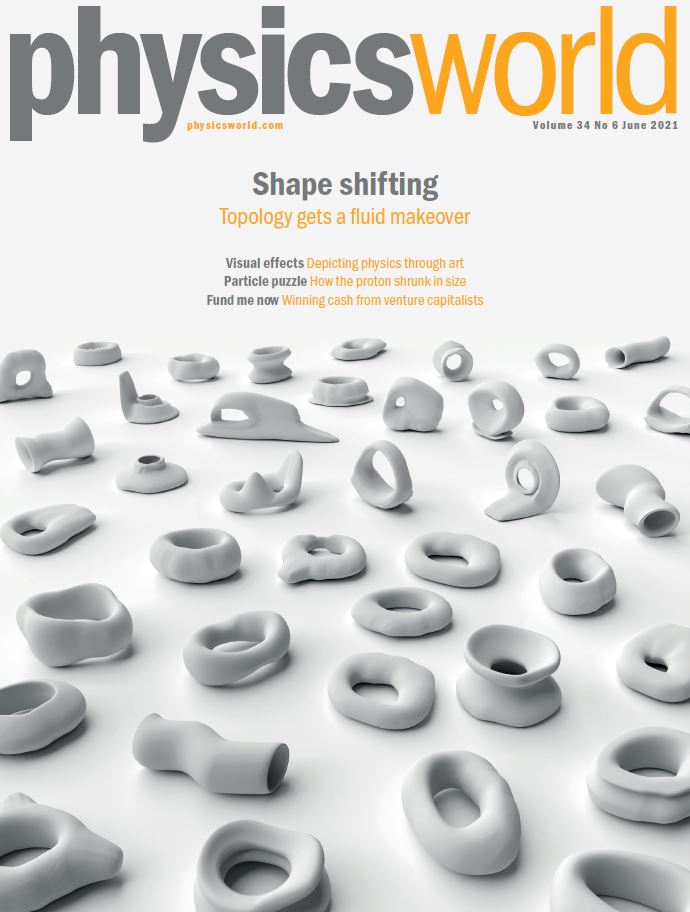
One of the hottest topics in solid-state physics is having a fluid makeover. As Jon Cartwright reports, the consequences of topological behaviours in fluid dynamics could be far-reaching for our understanding of the natural world and other complex systems, such as fusion tokamaks
ASK a solid-state physicist to name the biggest discovery in the field over the past 50 years, and chances are the answer – if not high-temperature superconductivity – will be topological materials. These are materials in which bulk properties determine special behaviour along the surface or an edge, and they have profoundly changed the study of electrons in solids – as recognized by three Nobel prizes. Their earliest incarnations in physics have created a new standard for electrical resistance, and provided an independent means to determine the fine-structure constant, ?, in quantum electrodynamics. These materials are also expected to bring great advances to information processing, resulting from topological electron behaviour in graphene, or the harnessing of topological qubits in quantum computing. Even exotic entities such as magnetic monopoles and Majorana particles, once a province of particle physics, have become the subject of solid-state topological study.
But now topology is going beyond the solid state. In the past few years, physicists have begun to realize that it could have a major role in fluid dynamics – the Earth’s oceans, for example, or plasmas, or the biological cells in fluid-like “active” matter. The research promises to provide a clear window through which to study what can otherwise be very murky areas of science. More importantly, it brings an entirely new area of mathematics to our understanding of the natural world; as well as to complex artificial systems of huge practical importance, namely fusion reactors. “Topology gives you a quick, direct way to see whether waves [in certain systems] exist,” says theorist Brad Marston of Brown University in Rhode Island. “Once you work through the logic, answers can come very simply.” […]
The rest of this article is available here.